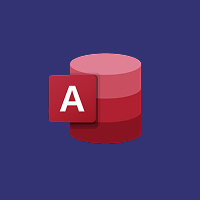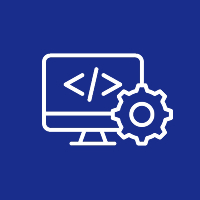Web development continues to grow rapidly. Developers are constantly searching for faster, more efficient ways to build rich applications. JavaScript frameworks like React, Angular, and Vue have dominated the frontend world for years. But a new contender from the .NET ecosystem—Blazor—is changing the game. It enables full-stack development using C#, bringing a fresh approach to building modern web apps.
What Is Blazor?
Blazor is a Microsoft web UI framework, a new member of the ASP.NET Core family. It allows developers to create interactive web apps in C# and Razor syntax, but not in JavaScript. This allows .NET code to run across the entire app stack—back and front end—in a single development experience.
It has two main hosting models:
Blazor WebAssembly (WASM): Fully client-side execution within the browser with WebAssembly. This permits applications to be executed offline after they are loaded.
Blazor Server: Renders application code on the server and pushes UI updates to the client on a real-time SignalR stream. This pattern enables fast initial load times and server-side processing.
Why Blazor Is a Game-Changer
It possesses an array of benefits that would appeal to .NET developers as well as enterprise teams since:
C# Everywhere: No longer must developers toggle between C# and JavaScript; C# can now be used across the entire application, thus reducing complexity and increasing productivity.
Streamlined Tooling: Visual Studio, Visual Studio Code, and .NET CLI support offer rich and intuitive development.
Component-Based UI: Like modern-day JavaScript frameworks, Blazor promotes building UIs that are composed of bounded, reusable components—making applications maintainable and scalable.
Shared Codebase: It allows teams to share business logic, models, and validation code across client and server, ensuring consistency and not redundancy.
Key Advantages of Embracing Blazor
Reduced Frontend Fragmentation
There is only one stack of language and framework, so the developers can keep their focus on development and maintenance—particularly on big or long projects.
Enterprise-Ready Architecture
With complete .NET integration, Blazor is ready for libraries such as Entity Framework, SignalR, ASP.NET Identity, and Azure services and is therefore enterprise-ready for solutions.
Shorter Development Cycles
Shared logic, robust tooling, and less dependence on multiple frontend technologies allow teams to ship features faster and with greater confidence.
Solid Support and Community
Blessed by Microsoft, consistent growth, complete documentation, and a good ecosystem have reached Blazor. Frequent updates make regular stability, performance, and feature enhancement possible.
Hosting Flexibility
Blazor offers developers flexibility in architecture by allowing them to host applications as WebAssembly or use Blazor Server for dynamic, server-bound functionality based on the needs of their applications.
Best Fit for Blazor
Blazor is ideal when:
- Your company does most of its work in C# and wants to use those skills on the frontend.
- You’re building internal dashboards, admin UIs, or enterprise portals.
- There needs to be close integration with other .NET systems and services.
- You don’t want redundant frontend and backend tech stacks to contend with.
- You want long-term maintainability with one codebase consumed by both.
Potential Issues to Consider
While Blazor provides an exciting dev experience, the likely downfalls must be weighed:
First Load Time (WASM): WebAssembly Blazor apps take longer to first-load via runtime and assembly download size, particularly on slow networks.
Browser Support: WebAssembly natively supports modern major browsers but could have trouble with extremely outdated or minority platforms.
Development Paradigm Shift: People who are used to MVC or JavaScript-centric development paradigms would need an acute learning curve to understand the component paradigm of Blazor.
Restricted Third-Party Libraries: While evolving rapidly, the ecosystem of Blazor is not yet at the maturity phase of JavaScript frameworks regarding UI plugins and libraries.
Looking Ahead
Blazor opens the door to Microsoft’s vision of what the future holds for .NET web development. The launch of Blazor Hybrid apps through .NET MAUI brings it to native desktop and mobile platforms. Continued performance enhancements in WebAssembly, Hot Reload, and ahead-of-time (AOT) compilation also advance Blazor as a high-performance option to traditional JavaScript SPA frameworks.
As more companies embrace Blazor, the ecosystem and community will have a chance to open up with additional third-party components, templates, and integration.
Final Thoughts
It is represents a paradigm shift in .NET front-end development. By making C# run in the browser, it bridges the historical chasm between client-side and server-side development—delivering one end-to-end, full-stack .NET experience. From developing enterprise-scale web applications, internal apps, to new cloud-connected ones, It offers a robust, scalable, and future-proof platform.
To .NET developers who wish to shift into bleeding-edge frontend development without abandoning their core skill set, Blazor is not merely an option—it’s the way forward.
Contact Us Today













 Database Development
Database Development












































